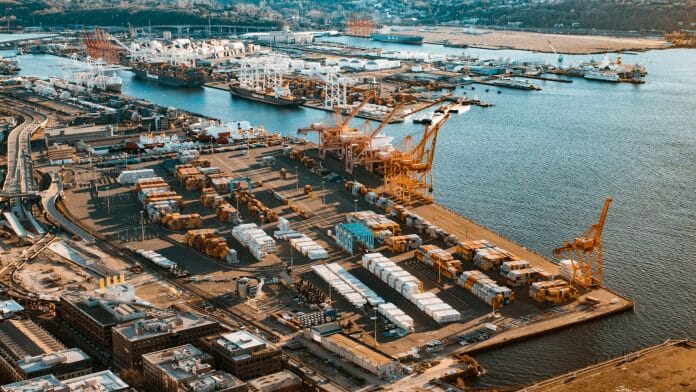In a 2 part-series, Nazery Khalid looks at efforts made by container port operators and authorities to reduce their carbon footprint. The second half of the article will be published on Wednesday.
By Nazery Khalid,
Green is the word
As the world reels from the increasingly apparent and worrying impacts of global warming and climate change, greater focus is being trained on industries and businesses to curb emissions and operate in a more green and clean manner.
Being a key facilitator of global trade, 90 percent of which is carried by seaborne transport, ports have joined the bandwagon with other industries to ‘go green’. Operators of commercial ports which handle various types of cargos and passenger terminals are at the forefront among marine industry players in making notable efforts to reduce their carbon footprint.
This shift towards being carbon neutral stems is propelled by their realization of the need to play an exemplary role in efforts to curb emissions to match their profile of being key infrastructures in the global trade ecosystem and supply chains. It is also driven by their awareness that ‘going green’ is not just a must to safeguard mother nature but also a logical path to take to enhance their competitiveness thus ensure their own economic survival and business sustainability.
Ports which operate on green principles walk the talk in various ways. The leading green ports of the world – mainly found in developed countries and regions – have well-defined policies on operating in an environmentally responsible way. They invest considerably on facilities to handle cargos and ships in a way that helps reduce Green House Gas (GHG) emissions and minimize their carbon footprint. These include having shore power facilities, proper hazardous material and waste storage, management and disposal systems and facilities, and even rainwater recycling facilities.
They also have energy efficient assets such as cranes running on electric rather than diesel, solar powered buildings and LED lightings. These green ports practice reverse logistics by using recyclable materials and incorporate being eco-friendly into their business models and philosophy. Some even also boast green certification issued and accredited by independent international bodies.
The owners and operators of environment conscious ports are aware of their responsibility as custodians of their operating landscape. They know they stand to gain the confidence and preference of customers among shipping lines, cargo owners and logistics service providers plus vendors and suppliers who share the same ideals of safeguarding the environment.
They also know by being environmentally responsible, they stand to win the vote of confidence of the business communities they serve and the population in the areas hosting them.
By having high internal standards and adhering to local and international environmental rules and regulations, green port operators put themselves in the good books of regulatory authorities and enforcement agencies.
Operators of ‘green ports’ spare themselves of fines and compounds and the headaches and negative publicity that comes with non-compliance. Being environmentally friendly does not hurt their reputation one bit as high-profile public infrastructures at the center of international trade and many supply chains
In other words, port operators have come to realize that operating in an eco-friendly way goes beyond merely paying lip service to corporate social responsibility (CSR). To them, going green is not just a flavor of the month mantra but a makes economic, social and strategic sense.
This can be seen in the manner some port operating companies establishing Sustainability Committees at not only the management level but also at the Board of Directors level.
The high-level involvement of top management and directors of port operating companies in overseeing environmental matters marks the shift of environmental protection and custodianship from being merely at the periphery of management of ports to the upper echelons of the organization.
The green agenda has now reached the point where it is no longer just a side item in port operating companies’ and authorities’ CSR lists. It has assumed a strategic importance that dictates the investment, operations, recruitment and even business strategies and directions of ports.
This is of course a welcome development in efforts to reverse global warming. In an industry not known to change very fast, the notable shift of port owners and operators to reduce their carbon footprint is quite a significant milestone.
The ‘going green’ movement at major has largely been done on a voluntary basis, with a bit of policy push from local and regional governments, and persuasion by NGOs and local communities.
Their preference for ports with green features creates a virtuous cycle all around among other port stakeholders. A green, clean port that operates efficiently and liked by its users, vendors and local community can only be good for the host area and, on a larger scale, the nation and the environment.
A clean port attracts like-minded port users such as shipping companies, logistics service providers such as hauliers and freight forwarders, tenants in their industrial zones and cargo owners. In sharing the green agenda, they collectively contribute to greening the maritime supply chains and the environment at large.
Nazery Khalid is a prominent writer, commentator and international speaker of various subjects in the field of maritime. He can be contacted at [email protected]









